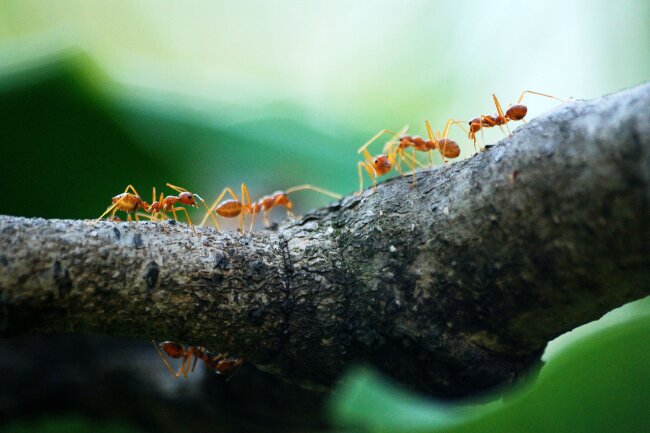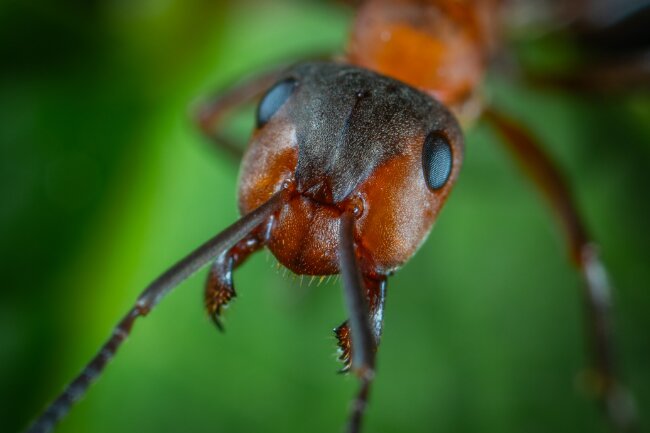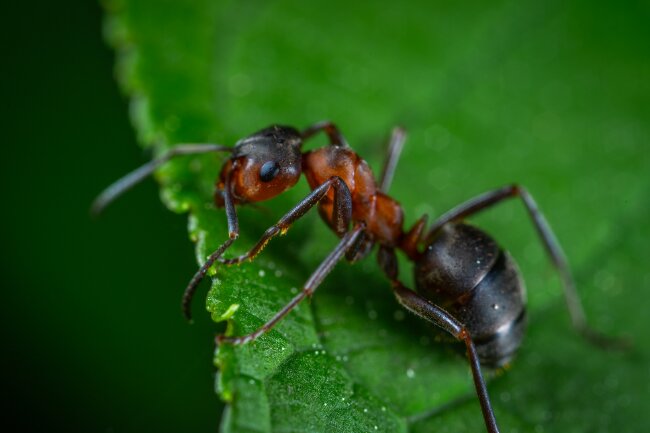Ants do have a kind of blood, though it is called hemolymph. What makes it different from blood is that it does not have red blood cells or haemoglobin. This is because ants blood does not need to carry oxygen around their bodies as it enters the body through the spiracles.
Contents
Internal life

There are over 12,400 species of ant in the world. They vary in where they live, what they eat and even how they look. Yet, despite these differences, there are many things that define them as an ant.
Ants are insects, meaning they have six legs, an exoskeleton, antennae and a body divided into a head, thorax and abdomen. What makes them ants is their elbowed antenna, which allows them to use them to feel objects in front of them, their ‘waisted’ abdomen, and the presence of metapleural glands.
| Characteristic | Ant Hemolymph | Vertebrate Blood |
|---|---|---|
| Composition | Colorless or pale yellow fluid | Red (due to hemoglobin) |
| Function | Transporting nutrients, waste, and hormones | Transporting oxygen and nutrients |
| Oxygen Transport | Via tracheal system and dissolved oxygen | Via red blood cells and hemoglobin |
| Cells | Hemocytes (immunity and wound healing) | Red and white blood cells |
| Clotting Mechanism | Coagulation process differs from blood clotting in vertebrates | Coagulation involving platelets and fibrin formation |
| Immune Response | Phagocytosis, encapsulation, and antimicrobial peptides | Antibodies and immune cells |
When it comes to their internal structures, they are similar to many other insects. Ants, like other insects, have an open circulatory system. This means that their internal fluid, hemolymph, is not contained within arteries and veins.
Hemolymph is the equivalent of our blood within insect species. The main difference between blood and hemolymph is that our blood contains red blood cells. Red blood cells are what gives blood its red colour. It is also what carries oxygen around the body to be delivered to the organs.
In insects, hemolymph does not need to carry oxygen, as their organs receive oxygen more directly. In humans, oxygen is taken into our lungs, where it diffuses into our blood and is carried around our body by the pumping of our hearts.
In insects, oxygen is fed directly to the organs by being pulled in across the body by a number of spiracles, small holes in the insect’s exoskeleton. The oxygen is then connected directly into the organs that require it.

It’s for this reason that insect blood isn’t red. Sometimes a red smear can be seen when certain species of insects have been squashed, this can often be another bodily fluid, such as fluids from their eyes or food they have recently ingested.
| Component | Function |
|---|---|
| Water | Solvent for nutrients, waste, and other substances |
| Nutrients and Waste | Transport of essential nutrients and metabolic waste |
| Hormones | Regulation of various physiological processes |
| Hemocytes | Involved in immune responses and wound healing |
| Antimicrobial Peptides | Defense against pathogens and microorganisms |
| Nutrient Storage | Reserve of nutrients for energy and growth |
Hemolymph is still an important liquid in insects, carrying the other vital components that our blood transports, such as critical minerals and hormones.
The hemolymph is pushed around the ant’s body by a long thin tube called the dorsal vessel. The lower part of the dorsal vessel is the ant’s heart but the whole system pumps hemolymph from the ant’s abdomen up to the head.
What makes it an open circulatory system is the fact that both ends of the dorsal vessel are open and once the hemolymph leaves it moves freely through the ant’s body cavity and around its organs, the force of the inflowing hemolymph circulating it on down to the abdomen where it is picked up once more.
Also read: Do Ants Have a Heart? What is it for? (Explained)
What is the purpose of hemolymph?
| Function | Description |
|---|---|
| Nutrient Transport | Carries nutrients to cells and removes waste products |
| Gas Exchange | Facilitates exchange of gases, especially oxygen and carbon dioxide |
| Immune Response | Hemocytes and antimicrobial peptides defend against pathogens |
| Hormone Distribution | Transports hormones for various physiological processes |
| Wound Healing | Hemocytes are involved in sealing wounds and preventing infections |
Homeostatic equilibrium
One of the main roles of hemolymph in insects is to regulate the various levels of chemicals, dispose of waste and keep the temperature at a responsible level. Because they have an open circulatory system, ants can actually cope with much higher temperatures and pressure than we would be able to.
Immune system
Hemolymph is a key part of the ant’s immune system and helps the ant to heal from injuries.
What colour is ants’ blood?

Insect blood is not red, instead, it tends to be more yellow or green in colour. It’s haemoglobin within the red blood cells that make humans blood-red, which the ants lack.
Do some ants have blue blood?
Ants do not have blue blood, however, some termites carry a kind of chemical warfare in their bodies, a liquid that is toxic to other insects.
When squashed, this blue liquid can be mistaken for blood. Many people confuse termites and ants, as they can look very similar.
The Dracula Ants
Dracula ants are a group of ant species that get their names from an unusual feeding method. The adult ants can’t eat solid food, so they feed prey to their larvae and then bite a hole in the larvae’s skin to drink their blood.
Strong bones
The only time you are likely to see ant blood is if one is squashed in front of you. However, the ant’s exoskeleton is surprisingly tough and difficult to break. Even if an ant is stepped on it may be able to get up and walk away. Because ant blood is green or yellow, it is also less obvious.
Still, however interested we might be in the unusual internal workings of an ant’s body, the ant’s would much prefer it to keep their important hemolymph inside.
Also read: If You Wonder “Do Ants Have Bones?” (Exoskeletons Explained)

